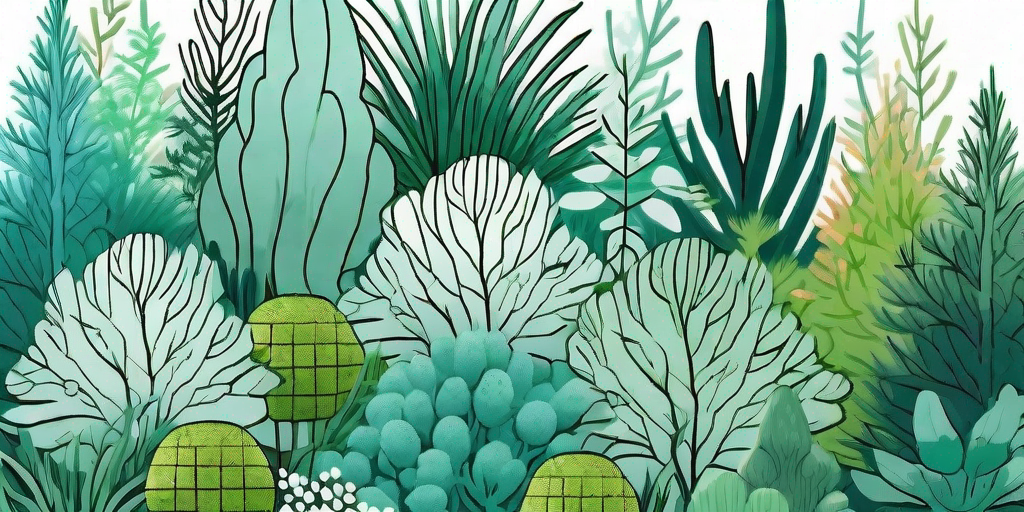
Welcome to the world of Junipers, the unsung heroes of the botanical world. These hardy, evergreen plants are more than just your average shrubs. They are the secret ingredient to a lush and vibrant garden that will make your neighbours green with envy. So, buckle up, gardening enthusiasts, as we embark on a journey to explore the wonders of Junipers.
Understanding the World of Junipers
Before we dive into the nitty-gritty of how to grow and care for Junipers, let's take a moment to appreciate their versatility and charm. Junipers, belonging to the cypress family, are a diverse group with over 50 species and countless cultivars. From creeping ground covers to towering trees, Junipers can fit into any garden design with ease.
What makes Junipers truly stand out is their resilience. These plants are like the Chuck Norris of the plant world, tough and adaptable. They can withstand harsh weather conditions, poor soil quality, and even neglect (not that we're endorsing plant neglect, mind you). This makes them an excellent choice for both novice gardeners and those with a knack for killing plants.
The Aesthetics of Junipers
Junipers are not just about toughness and resilience. They are also about beauty and aesthetics. Their needle-like foliage, which can range from vibrant green to silvery-blue, adds a touch of elegance to any garden. And let's not forget their berries. While not all Junipers produce berries, those that do offer a delightful contrast with their deep blue or red fruits.
And if you're a fan of bonsai, you're in luck. Junipers are one of the most popular choices for this ancient Japanese art form. With their flexible branches and slow growth rate, they are perfect for creating miniature landscapes right in your living room.
How to Grow and Care for Junipers
Now that we've sufficiently hyped up Junipers, let's get down to business. How do you grow and care for these botanical wonders? Fear not, dear reader, for we have you covered. Here's a step-by-step guide to help you become a Juniper whisperer.
Choosing the Right Juniper
The first step in your Juniper journey is choosing the right plant. Remember, there are over 50 species of Junipers, each with its own unique characteristics. Some Junipers are low-growing and perfect for ground cover, while others can grow into large trees. So, choose a Juniper that fits your garden design and space.
Also, pay attention to the plant's sunlight and soil requirements. Most Junipers prefer full sun and well-drained soil. However, there are some species that can tolerate partial shade and poor soil. So, do your homework before you bring home a Juniper.
Planting Your Juniper
Once you've chosen your Juniper, it's time to get your hands dirty. Plant your Juniper in a hole that's twice as wide and just as deep as the root ball. Backfill the hole with soil, making sure the plant is at the same level it was growing at in its container. Water thoroughly after planting.
Pro tip: If you're planting more than one Juniper, make sure to space them properly. Junipers need room to grow and breathe. Crowding them can lead to disease and poor growth.
Caring for Your Juniper
Now that your Juniper is in the ground, it's time to care for it. Water your Juniper regularly, especially during dry spells. However, be careful not to overwater. Remember, Junipers prefer well-drained soil and can suffer from root rot if the soil is too wet.
As for pruning, Junipers don't require much. Just remove any dead or diseased branches to keep the plant healthy. And if you're growing a Juniper for bonsai, you'll need to prune more frequently to maintain the desired shape.
Common Juniper Problems and How to Solve Them
Like any plant, Junipers can have their share of problems. But don't worry, we've got solutions for the most common issues.
Juniper Blight
Juniper blight is a fungal disease that can cause browning and death of the foliage. To prevent this, ensure your Juniper has good air circulation and avoid wetting the foliage when watering. If your Juniper does get blight, prune and dispose of the affected branches.
Spider Mites
Spider mites are tiny pests that can cause yellowing and dropping of the foliage. To control spider mites, spray your Juniper with a strong jet of water or use an insecticidal soap.
FAQs About Junipers
- Are Juniper berries edible?
Yes and no. While some species of Junipers produce edible berries used in cooking and gin making, others can be toxic. So, it's best to leave the berry picking to the experts. - Can Junipers grow indoors?
Generally, Junipers prefer outdoor conditions. However, some species can be grown indoors as bonsai. Just make sure they get plenty of sunlight and good air circulation. - Are Junipers fast-growing?
Junipers are generally slow to moderate growers. However, their growth rate can vary depending on the species and growing conditions.
And there you have it, folks. Everything you need to know about Junipers and how to use them to create a lush and vibrant garden. So, what are you waiting for? Get out there and start planting!















